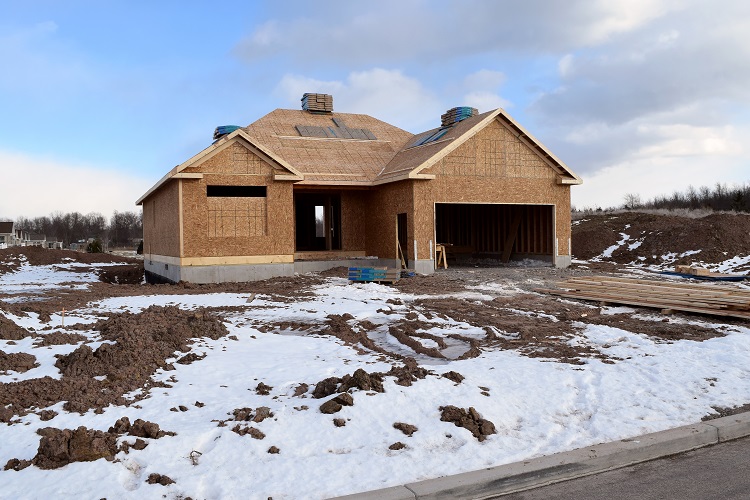7 Tips to Help With Your Winter Construction Projects
Learn effective ways to tackle winter construction challenges with tips for safe, cost-effective solutions, from site prep to worker safety.
October 15, 2024
|
Contractor

When the leaves start to fall, one thing is sure—it is almost winter. Depending on your location, weather can significantly impact project costs and scheduling. Since weather conditions can change rapidly, it’s crucial to take full advantage of every clear day.
Below are some tips for winter construction you may want to consider:
- Bid preparation: A contractor's bid is the foundation of a successful project. You might bid a job in the summer, but due to delays or material shortages, construction might not begin until winter. Include costs for winter protection measures like temporary shelters, heating, snowplowing, and salting in your proposal. These costs are often overlooked but can significantly impact the budget when winter weather hits unexpectedly.
- Site work preparation: Site work should be prioritized before the ground freezes. Installing underground utilities such as laterals, storm sewers, parking lot curbs, and the stone base for parking lots can put your project ahead of schedule. Additionally, if asphalt plants are still open, consider installing the binder course and temporary striping for parking lots. This will give your client a functional staging area during winter and allow for easier snow management, with final asphalt finishing in spring.
- Building enclosure: Enclosing the building should be a top priority to keep the project moving during winter. Even if the exterior walls aren’t fully finished, covering them with appropriate sheeting and weather barriers like Tyvek can allow interior work to proceed. If the roof is sealed, temporary heating can be introduced, allowing insulation and other interior work to begin. When pouring concrete floors, ensure that you have adequate ventilation and heating to prevent moisture buildup and maintain a comfortable work environment. Proper ventilation, especially when using equipment indoors, is essential to prevent carbon monoxide poisoning.
- Storage solutions: Protecting materials from the elements is crucial. Temporary storage units or covered areas for materials like lumber, tools, and equipment can prevent damage from snow, ice, or freezing temperatures. Cover scaffolding, ladders, and walkways to keep them dry and safe from ice buildup, reducing potential slip hazards.
- Worker safety: Winter brings increased safety risks, especially when it comes to worker safety. Keeping sidewalks, ladders, and scaffolding clear of ice and snow is critical to avoid slips and falls. Workers should wear proper winter gear, including layered clothing, insulated gloves, hard hat liners, face coverings, and boots designed to prevent frostbite and hypothermia. Rotate workers frequently during extreme cold and ensure heated rest areas are available to minimize prolonged exposure to freezing temperatures.
- Equipment Safety: Operating heavy machinery in winter conditions requires extra caution. Snow piles can create blind spots, so all operators should be properly licensed and aware of these risks. Performing daily equipment checks is essential. Are tires providing sufficient traction? Should chains be installed? Is the block heater working properly? Ensure rearview mirrors and equipment components like forks are free from ice. Use the correct oil weight for cold conditions and keep fuel tanks topped off with gas or diesel conditioners to prevent freezing and ensure smooth start-ups on cold mornings.
- Materials protection: Cold weather can compromise the integrity of building materials. Poured concrete, for instance, needs to be protected from freezing for at least 24 hours to prevent structural damage. Additionally, paint, drywall compound, and other finishes may require extra time to dry and cure in colder temperatures. Be mindful of these factors when planning work sequences to avoid delays or material failures.
Winter construction can present unique challenges, but proper planning, preparation, and attention to detail can help ensure a smooth and efficient project. By addressing the risks and taking appropriate precautions, you can keep your team safe and your project on track, no matter the weather.
An insurance company that cares about you and insuring the things you wish to be insured.
Get a Quote> Find an Agent>

